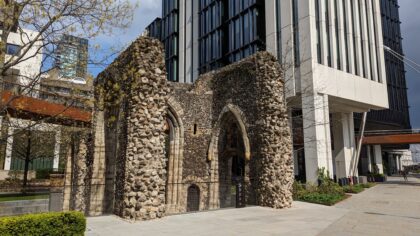New technology can be used to find faults on the track – but when it comes to fixing things, it still needs help from some very heavy machinery!
It’s a very big job to maintain and repair the tracks. When track isn’t as it should be, speed limits may need to be imposed or part of the line might get closed – and that means delays.
Track maintenance is hard work, with engineers often having to work at night or weekends repairing tracks.


In the past, the work was very manual with engineers using jacks, spanners and shovels. When something heavy was involved – like moving sections of tracks – teams with dozens of men would be needed.
Today a lot of heavy maintenance is automated using special trains which reduce the need for railway workers to be on the track while the work takes place. It’s not just more efficient – but safer too.

Where rails and sleepers need to be replaced, engineers use a track renewal train. These 800 metre trains can replace existing rails and sleepers with high-performing new ones.
Moving along the track that needs replacing, the front part of the train runs on the old rails, while the rear runs on the new rail that has been installed.
The train carries all the new rails and sleepers that it needs. Rail is carried on-board parallel to the track being replaced.

Sleepers have to be stored specially to ensure the train remains in gauge and need turning around before being laid.
A special crane on the train rotates them through 90 degrees while moving them from a delivery wagon to the installation mechanisms. It can also load the old sleepers onto the empty wagons.

As a track renewal train doesn’t need to use the neighbouring tracks, these lines can remain open whilst maintenance is being done, allowing other trains to run.
As well as repair jobs such as changing broken rails and damaged sleepers, there’s lots of regular maintenance taking place all the time – lubricating and adjusting switches, tightening loose track components, grinding the rail surface that train wheels run on to leave a clean surface for a smoother ride, as well as cleaning and replacing the ballast!

Find out more about Britain’s railways!
Bex and Dan from Fun Kids learn all about the future of Britain’s railways, from signals to trains and tracks, in this new podcast series!
 Britain’s Digital Railways, in association with the Royal Academy of Engineering Ingenious scheme
Britain’s Digital Railways, in association with the Royal Academy of Engineering Ingenious scheme
Add a commentBritain’s Digital Railways
Find out about Britain's railways - from signals and trains to tracks and safety!
More From Britain’s Digital Railways





